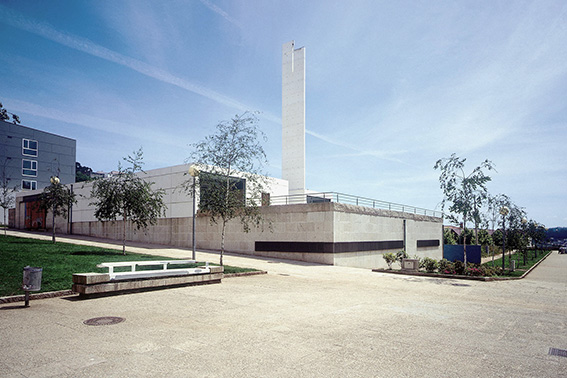La tensión culto-liturgia-forma en la arquitectura religiosa católica
A propósito de la iglesia parroquial de san Antonio de Padua (1994-2007)
DOI:
https://doi.org/10.17979/aarc.2009.2.1.5036Palabras clave:
Identidad, memoria, culto, forma, Santiago de CompostelaResumen
La razón de ser de la liturgia y del culto implementadas en el programa del proyecto, y puestas en tensión con los modelos espaciales derivados de las formas arquitectónicas que celebran la fe y la alabanza al Dios Creador, hacen que estas mismas formas arquitectónicas se perciban como valores o bienes, tanto materiales como espirituales. Porque glosando a Jean Hani podríamos decir que el arte sagrado es el vehículo del espíritu divino, ya que la forma artística permite asimilar directamente las verdades trascendentes y suprarracionales; y es que la finalidad del arte consiste en revelar la imagen de la naturaleza divina impresa en lo creado, realizando objetos visibles que sean símbolos del Dios invisible. Las formas arquitectónicas así concebidas —y el arte en general— poseen lo que podemos llamar un valor sacramental. Son celebración, y desde esa percepción, una iglesia no es simplemente un edificio, ni tampoco un monumento, sino que es un santuario, un templo. Su finalidad no es solamente la de reunir a los fieles, sino la de crear para ellos una atmósfera que permita a la gracia manifestarse mejor. Esto proviene de la teología cristiana y, se relaciona de una manera u otra con aspectos de la tradición del simbolismo universal y local —el teológico y cosmológico—, como por ejemplo la orientación ritual, la identificación del templo con el cuerpo de Cristo (que es cuando pasa la cruz latina ó incluso griega), el rico simbolismo de los elementos que intervienen en el santo sacrificio de la misa centrados en torno a la cruz, etc.
Pero pienso —y eso es lo que me gustaría dejar claro aquí— que la identidad también se manifiesta a través de la arquitectura histórica y actual por medio de la percepción y la emoción colectiva e individual. Es a través de la liturgia y el culto cuando se posibilita esa percepción identitaria en el templo. No es la simple visita cultural, ni mucho menos la visita turística de masas en la que se dan unas explicaciones rápidas para llegar enseguida a otro monumento: en absoluto. La percepción del valor teológico y cosmológico católico se produce fundamentalmente a través de la liturgia y del culto.
Descargas

Descargas
Publicado
Número
Sección
Licencia

Esta obra está bajo una licencia internacional Creative Commons Atribución-NoComercial-CompartirIgual 4.0.















